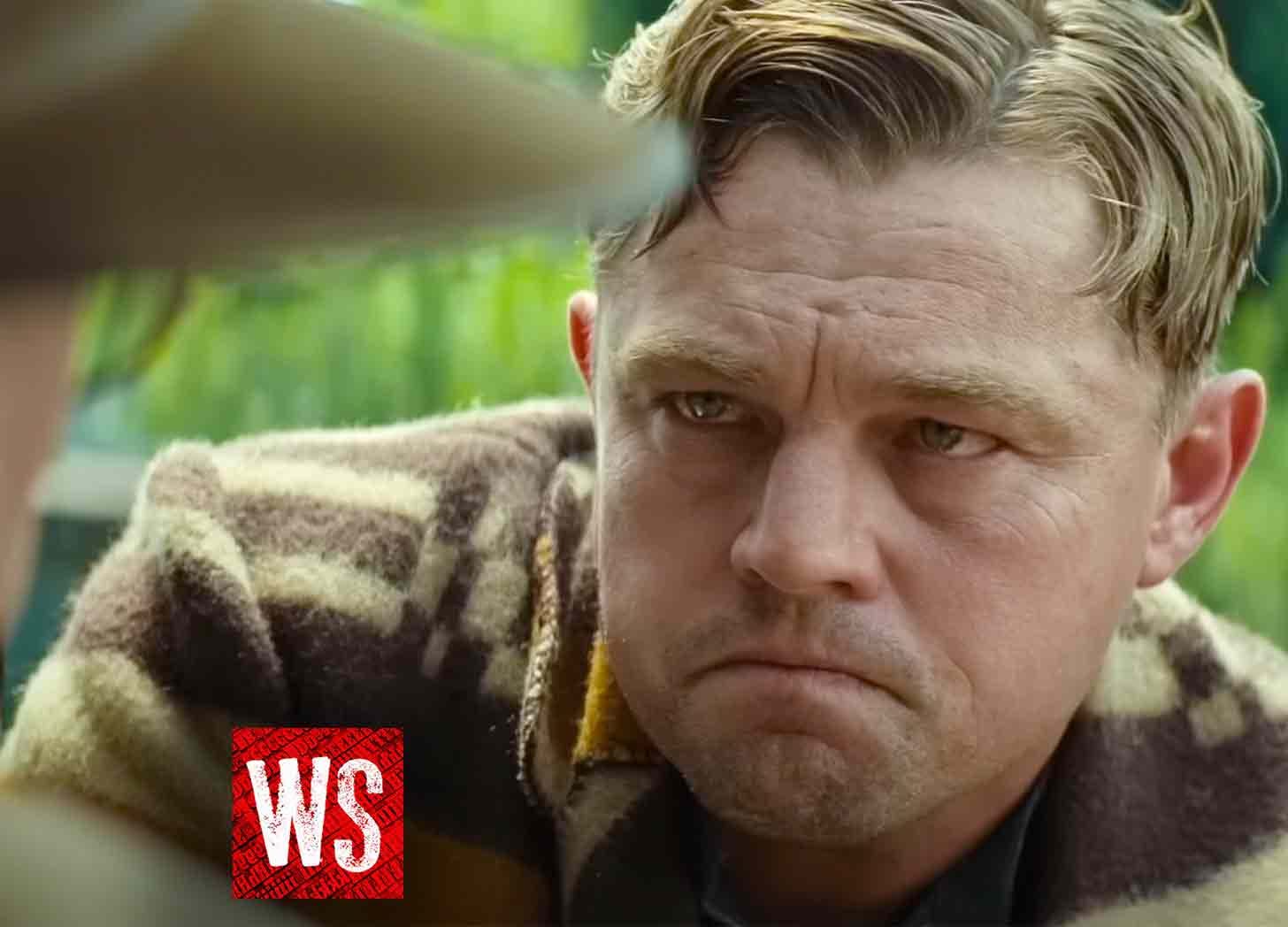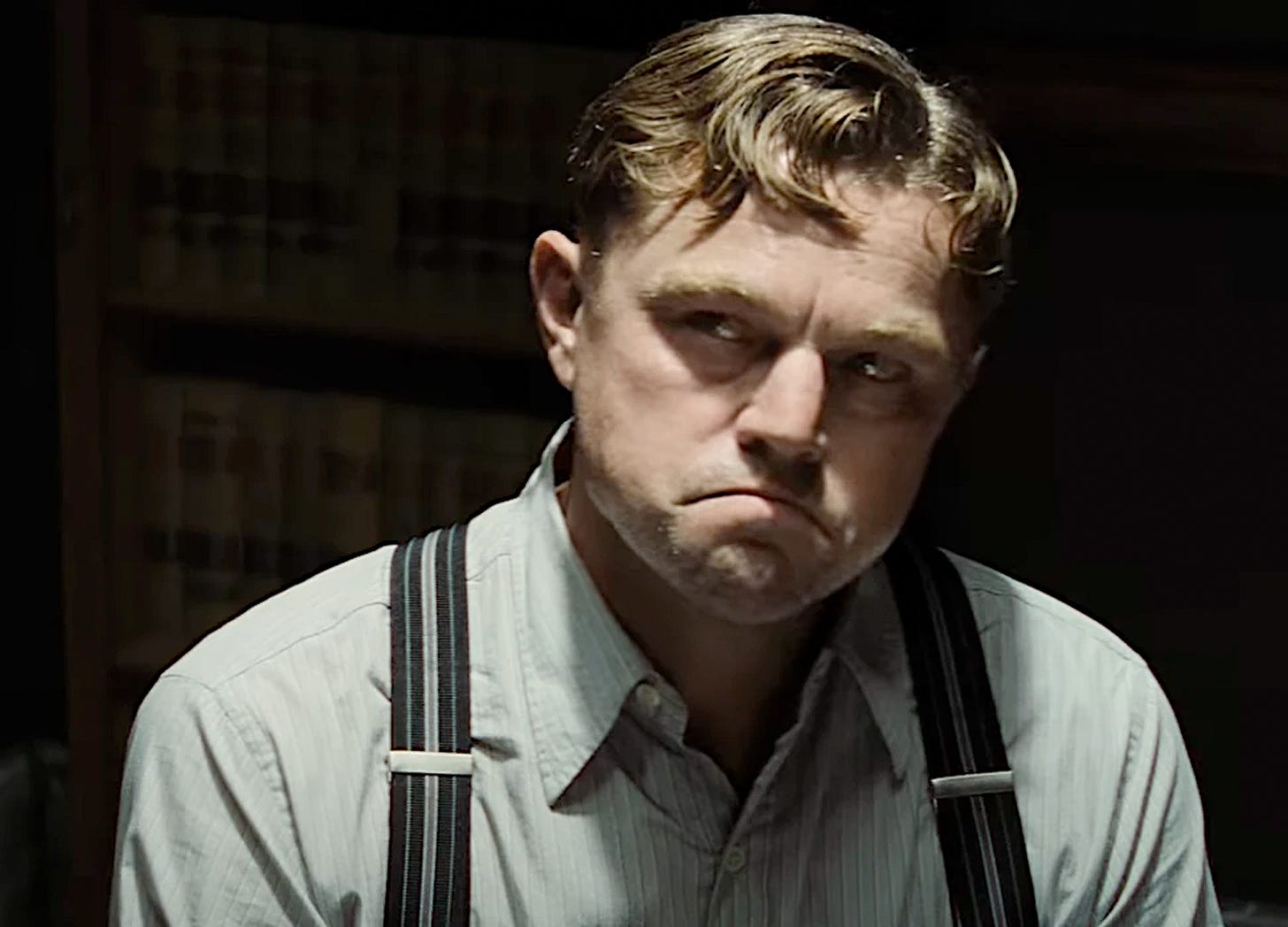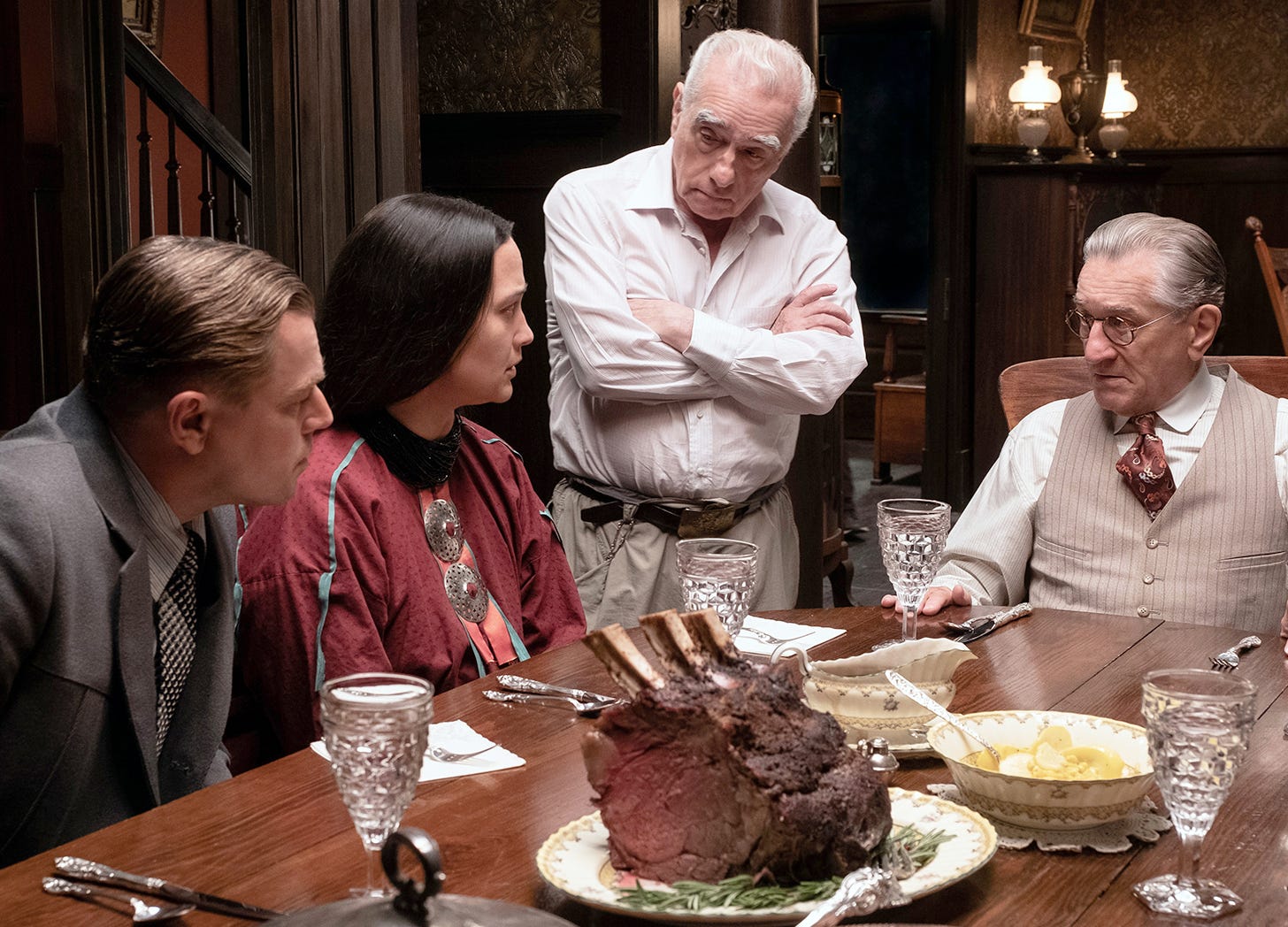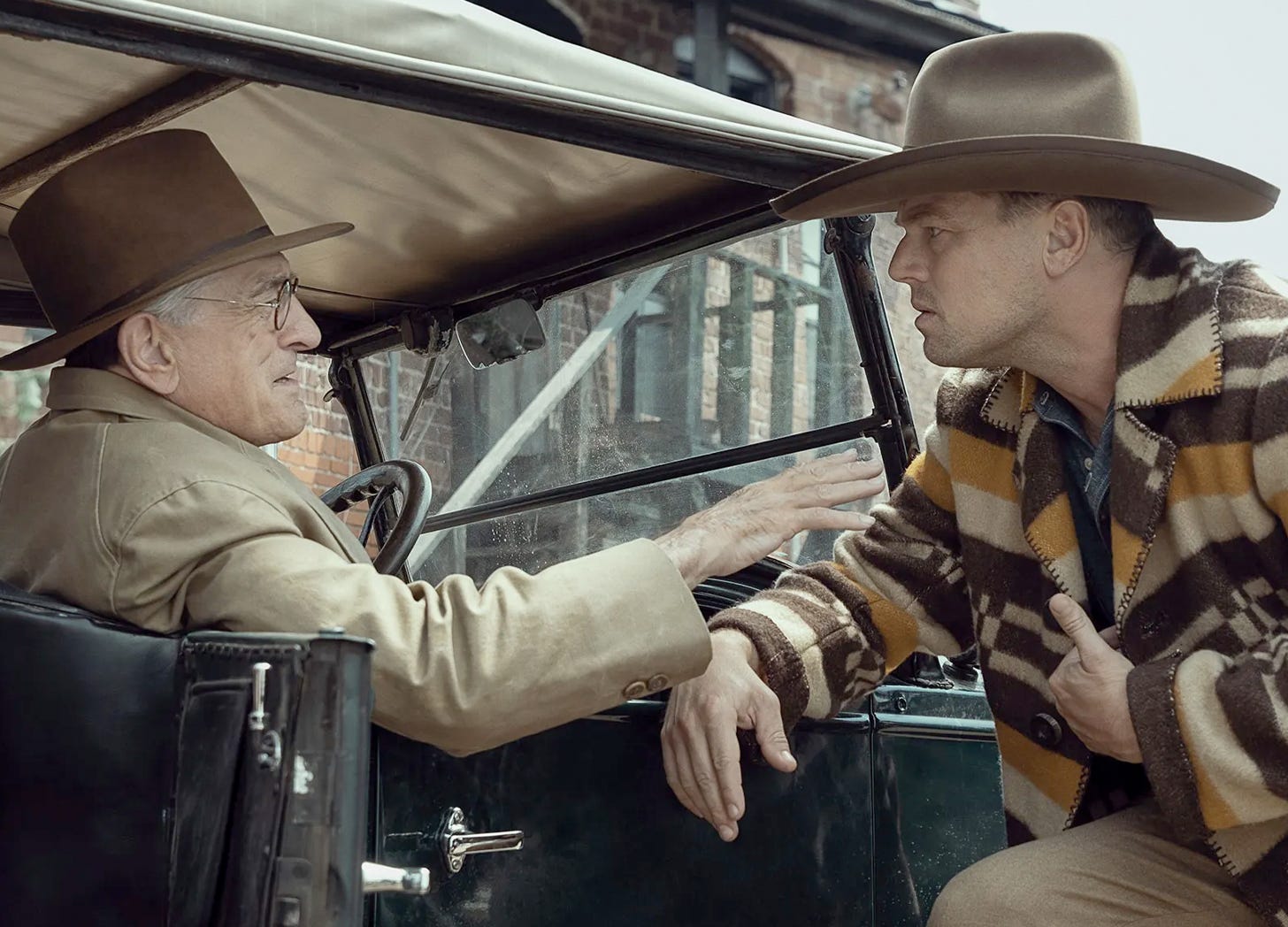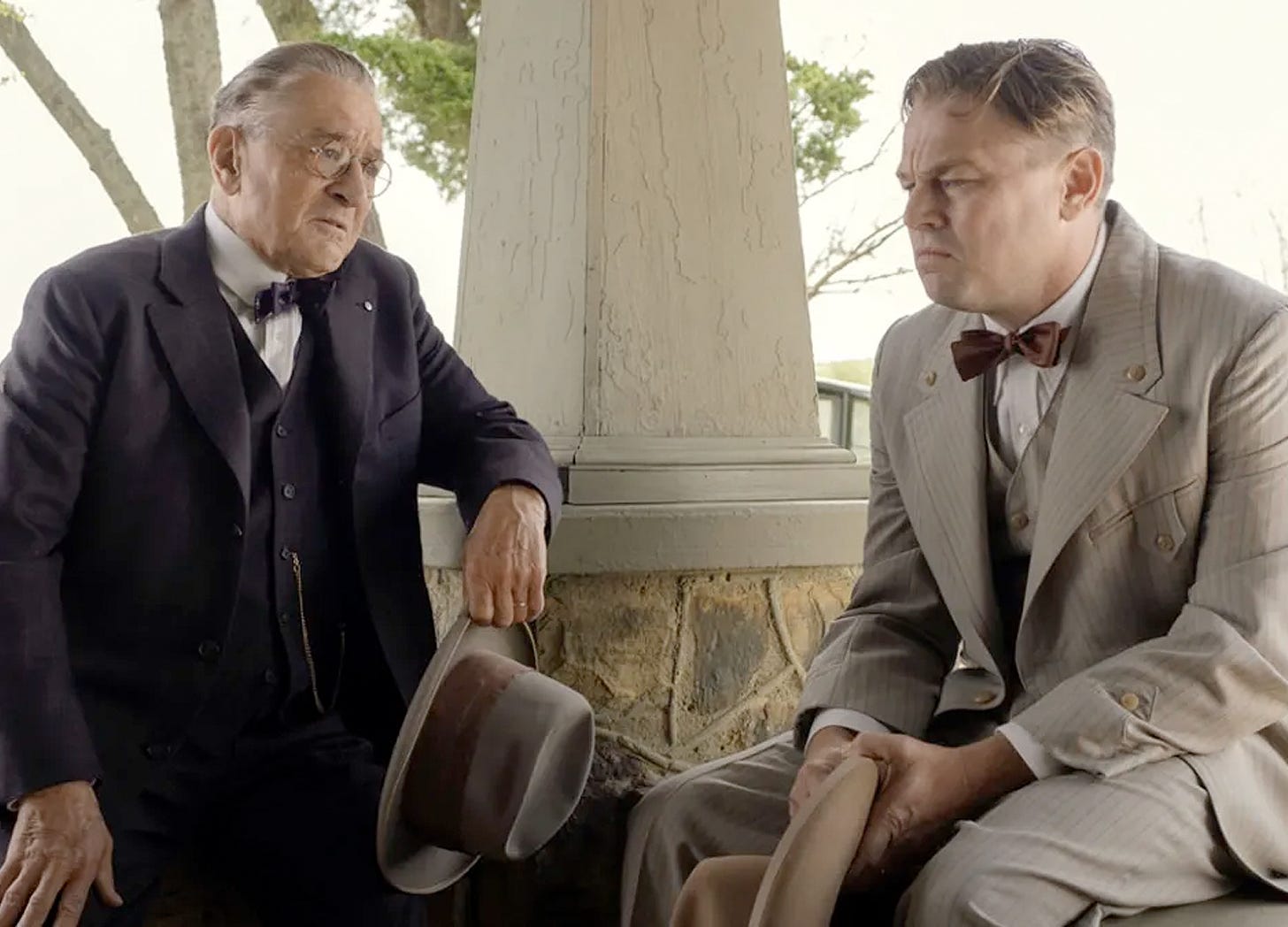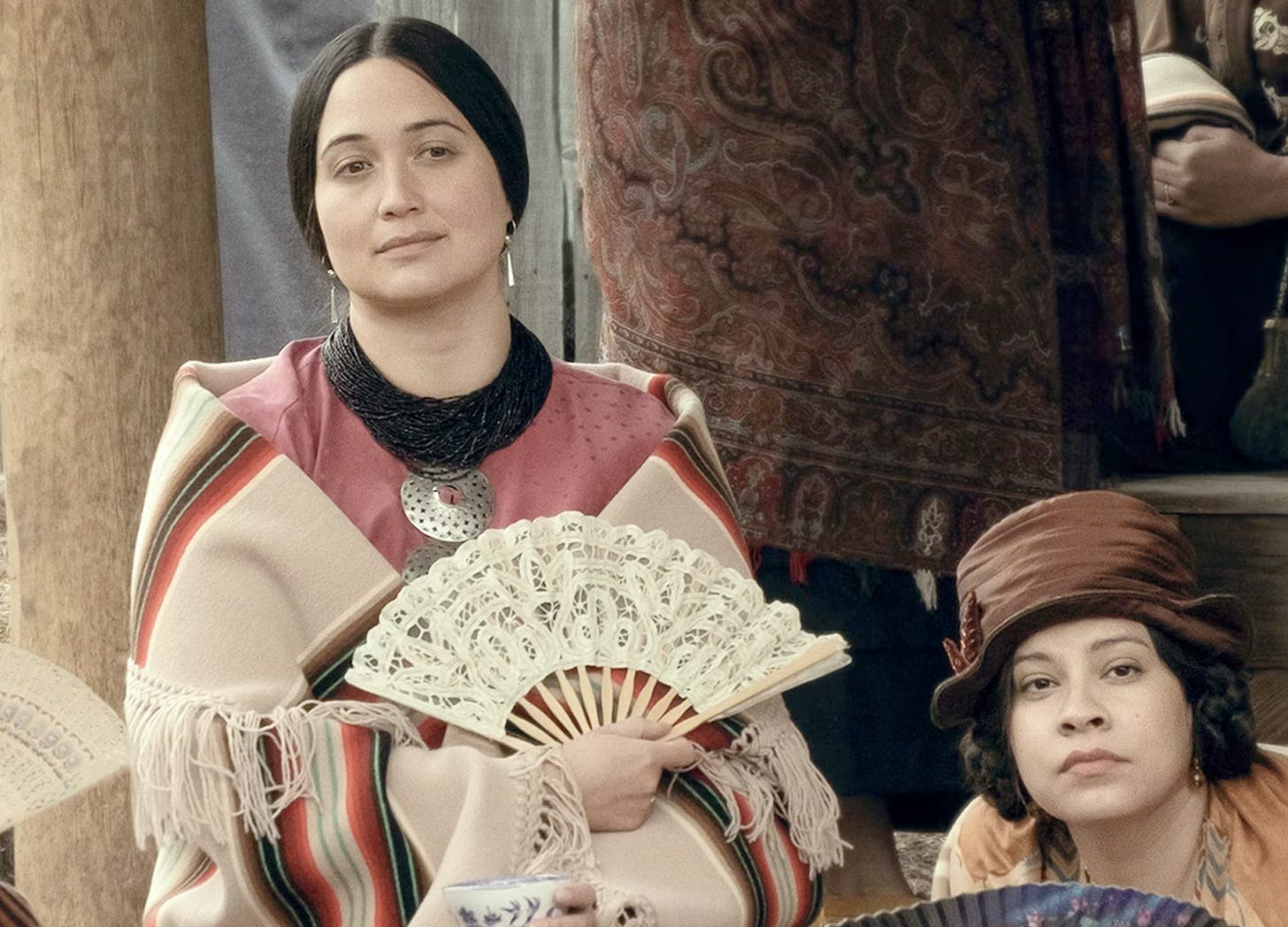Review: Martin Scorsese's Killers of the Flower Moon
A slog of a film ruined by one key thing
Martin Scorsese. Leonardo DiCaprio. Robert De Niro. A riveting true-crime story. Sounds like a recipe for a slam-dunk success, right?
Well, not this time, Marty. Much has been made of the ongoing public feud that director Martin Scorsese has had with “Marvel movies” or comic-book movies, which began back in 2019 when he said that they were “not cinema” and compared their contribution to film culture as a “theme park ride”.
There was a bevy of backlash once Scorsese’s initial comments were made, which has resurfaced after a 2023 GQ interview where he said that “we’ve got to save cinema” from the “danger” of these big superhero showdowns. “The danger there is what it’s doing to our culture because there are going to be generations now that think movies are only those – that’s what movies are,” said Scorsese.
Of course, the pushback from superhero fans and the younger generation (who have likely never seen Taxi Driver, Raging Bull, or even Goodfellas) was harsh against this cranky old filmmaker, who many likened to someone who’s out of touch with the way things are now. However, Scorsese makes some good points in his stance, which isn’t against the existence of superhero films, but rather their predominance in the cultural zeitgeist.
That said, for every Goodfellas or The Departed or Gangs of New York, Scorsese himself has delivered a sluggish dud, from Kundun to Silence to Hugo, etc. In sum, not every film lensed by the masterful artist is a masterpiece, and sadly, Killers of the Flower Moon fits squarely in that ho-hum chunk of drawn-out drivel that is peppered throughout his filmography.
When Scorsese is on fire, he is ON FIRE. Let’s be clear on that. Taxi Driver, Raging Bull, Cape Fear, Goodfellas, Casino, The Departed, The Gangs of New York, and The Wolf of Wall Street are among his best, in my humble opinion. You could argue the merits of The Age of Innocence, Mean Streets, The Aviator, The Last Temptation of Christ, The Color of Money, Bringing Out The Dead, and The Irishman, but those are films I tend to revisit with far less frequency than his standouts.
The point? Well, it’s simple. Not every Scorsese film is a banger. I think we can sit okay with that at this juncture. Is he still one of the best filmmakers of all time? Absolutely. But, in our misguided efforts to hero worship an artist by saying they can do no wrong, we forget the importance of examining art. Not all artists will deliver masterpiece after masterpiece. And, here’s the thing: that’s okay. Also, as per the subjectivity of art, you can STILL feel like every piece is a masterpiece and not be wrong. It’s your opinion, your take, your prerogative. I think you’re wrong, but if you want to die on the hill of “they can do no wrong” then by all means, go for it.
There are so many artists, writers, and creatives that I’ve admired throughout my life, and while I am always hoping that they deliver more work that encompasses what I consider to be their best, it simply isn’t always that way. It rarely is. Artists are meant to strive, to experiment, to shift, to grow, to expand their gifts, rather than spin their wheels. And, at the same time, we want to see more of what they’ve proven to be good at, even if they are tired of the very thing that put them on the map.
Scorsese has always attempted to branch out, to follow his passion, and to make films that speak to him. We love when he’s making violent gangster dramas and he obviously loves telling those tales, but he has constantly shifted genres to play in other pools, never allowing himself to be completely pigeon-holed in any one genre. Sometimes that works out beautifully, and sometimes not.
Unfortunately, it simply doesn’t work for Killers of the Flower Moon, which takes a few pages from his gangster films but is far more in the experimental field than one might believe going in. Based on the nonfiction novel of the same name by David Grann, a procedural-like book that covers the corruption, racial injustice, and murder that followed when the native Osage tribes in Oklahoma discovered oil-rich deposits that made them wealthy beyond their dreams in the 1920s.
It's a riveting, thought-provoking, and dense book that peels back the layers of racism and abject greed of those who subjected the Osage people to humiliation and degradation in the face of watching out for their best interests, which was ultimately the best interests of those who kept them under their thumb. The book also focuses on the formation of the FBI, as it took an entire special unit of agents to finally infiltrate the deep-seated corruption that rattled the Osage community at that time. This factors heavily into the book but is more of a footnote in the film, which makes some very odd creative decisions from the drop.
The most problematic aspect of Killers of the Flower Moon is with DiCaprio. A proven and formidable actor in Scorsese’s rotation of trusted accomplices, DiCaprio is usually in the right role for whatever project they’re collaborating on, but for Killers, the choice to play Ernest Burkhart, a simple, uninteresting, and middling character as the lead was the wrong choice altogether. Initially, DiCaprio was set to play Tom White, the lead FBI agent who takes on the Osage case (played instead by Jesse Plemons, in a significantly pared-down role), but the actor felt that the story would be better served by telling it from Burkhart’s perspective.
He couldn’t have been more wrong. In choosing to have Burkhart in the lead, the film tries to make him into something more than what he was, but can’t get beyond the fact that he was more of a straggler in the bigger corruption that was happening around him. He’s not a hero, for sure, and as a villain, he’s more of a patsy than anything else. White, on the other hand, the FBI Agent who led the investigation, was a far more compelling character who had much more to explore than a drunken fool who seemed to just like money and women. The book takes great pains to dive into White’s life, from childhood to death, and his story is far more interesting than that of Burkhart’s. It’s not even close.
The problem with this creative risk is that it wastes DiCaprio’s significant talent on a role that is beneath his skill level. He doesn’t belong in the role of Burkhart, a simple, impressionable vagrant-like leech that wears a permanent frown on his face, except when he’s gambling, saying how much he “loves money” even though we never quite understand anything that drives him. The role would’ve been better served by Plemons, who is great at playing aloof oddballs, but is instead inhabiting the role that DiCaprio should’ve been playing. A simple role swap between DiCaprio and Plemons would’ve served Killers of the Flower Moon exceptionally and allowed the film to explore the FBI aspect, as well as that of the character of White, with much more depth, providing a far more compelling story than what we got.
It feels like Scorsese and DiCaprio didn’t want to have a “hero in a white hat” kind of film, instead keeping the focus on the Osage people, rather than what some may consider a “white savior” (pun intended). But, White was no savior, so much as a man up against the wall in terms of cracking a case that everyone involved wanted to be kept closed, to keep their pockets full. White changed things forever with his investigation, but it was a hard road to get there, and he served as someone who truly sought to carry out justice, something he learned at a very young age. As a boy, White’s father was a lawman, and he witnessed everything from prison riots to hangings to frontier justice that led him to follow in his father’s footsteps, eventually becoming a Texas Ranger, before joining the newly formed FBI and sent by J. Edgar Hoover to investigate the Osage murders. Now, THAT is a character I want to get to know.
If any of that sounds interesting, then I’d recommend reading the book, because Plemons’ White doesn’t show up until the third hour of Killers of the Flower Moon and you learn almost nothing about who he is or why he matters. It’s a perplexing choice to omit so much of White’s story, and it seems that Scorsese and DiCaprio simply decided that it would be better to keep the story centrally focused on the Osage characters, namely Mollie Burkhart (Lily Gladstone) and her family.
The film’s main villain, William Hale, a corrupt-as-hell rancher played by Robert De Niro, is himself miscast in the role, as he’s far too old at 80 (Hale was 48 during the height of the Osage murders) and simply doesn’t carry the same presence and stature that he did in his earlier works with Scorsese. While I understand that Scorsese probably just wanted to work with Bobby again, it’s a role that needed an energetic personality. Far more interesting choices could’ve been Kevin Costner, Matthew McConaughey, or even Tom Hanks, but De Niro is just too long in the tooth for a role of this weight.
Gladstone as Mollie gives a strong performance, which is a quiet and reserved part, peppered with grief and pain. She is essentially the (broken) heart of the film, and much is made of the reworked script to make it about her relationship with DiCaprio’s Burkhart. Sadly, those scenes feel mostly dragged out, as they simply aren’t that interesting.
The movie has many of Scorsese’s signature moves, including long-take shots with multiple characters interacting as the camera weaves through a scene, as well as the sudden shock violence that frequently pervades his work. The characters throughout the film are colorful personalities, but nowhere near as interesting, provoking, or compelling as the ones from his better films. In many ways, they come off as caricatures of his better work, making their impact feel less important or convincing.
While many of the real-world people could have been much as they are portrayed, there’s something about them that feels less memorable than they should. You’ll struggle to remember who is who, why they matter, what their stake is in everything, and what their motives might be. They simply aren’t fleshed out in a way that makes their presence feel like they should, especially given the true impact of the real-world events being portrayed.
The trademark violence is subdued and devoid of the hard impact felt in works like Casino or Goodfellas, reminiscent of the sidewalk beatdown in Scorsese’s last film, The Irishman, which looked like a filmed rehearsal that was meant to make sure no one got hurt. While the violence is always painful and portrayed in a way that makes one wince, rather than cheer, for Killers it’s either too subtle or too restrained to garner the necessary emotion to tell this story.
The biggest problem with Killers of the Flower Moon, which goes hand-in-hand with the miscasting of DiCaprio, is the sluggish pace. Whereas in something like Casino or The Wolf of Wall Street, where the pace soars and unfolds with crackling, attention-demanding precision, Killers of the Flower Moon wallows in scenes that go on far too long, drawing out sequences that simply don’t need the extra time. The urgency to want to get things moving is akin to waiting in traffic when you see the light has turned green and nothing is moving. It’s painful at times and evokes the kind of impatience one hates to confront when viewing a longer film. Sometimes you never feel it (Avengers: Endgame, Dances with Wolves, or Braveheart come to mind) and sometimes you REALLY feel it (The Deer Hunter or Cats, to name a few), and Killers fits squarely in the latter.
I’ve heard both sides of the argument by critics for and against Killers of the Flower Moon and none of them are wrong. It’s a challenging work, no matter how you slice it, but for my money, it fails in the biggest way due to focusing on the absolute wrong character to drive the story, a decision that I believe sinks the film. DiCaprio, in his desire to challenge himself as an actor or act on instincts that he believed were correct, chose to focus on a character that is a complete bore. It’s the equivalent of making the henchman the lead character and it just doesn’t work. It’s a wasteful display of DiCaprio’s abilities. It would be easy to get past this error if it wasn’t so glaringly obvious and it sinks the entire film, even with Gladstone’s strong performance (and as good as she is, she spends a huge bulk of the film just lying in bed with sickness).
My love for Scorsese is not diminished because of Killers of the Flower Moon by any measure. All artists are allowed to experiment in all facets of their work and I appreciate that he felt compelled to make the film and follow his instincts. For me, however, it felt like the creative decisions on the level of casting and narrative went awry, making a film that could’ve been amazing into a film that is instead a perplexing slog. I nonetheless await whatever Scorsese churns out next, always hopeful it will have the impact and presence of his better work, and grateful that he continues to share his vision no matter what.
Killers of the Flower Moon is currently in theaters and will debut soon on Apple TV.





